6. King Kong (1976)
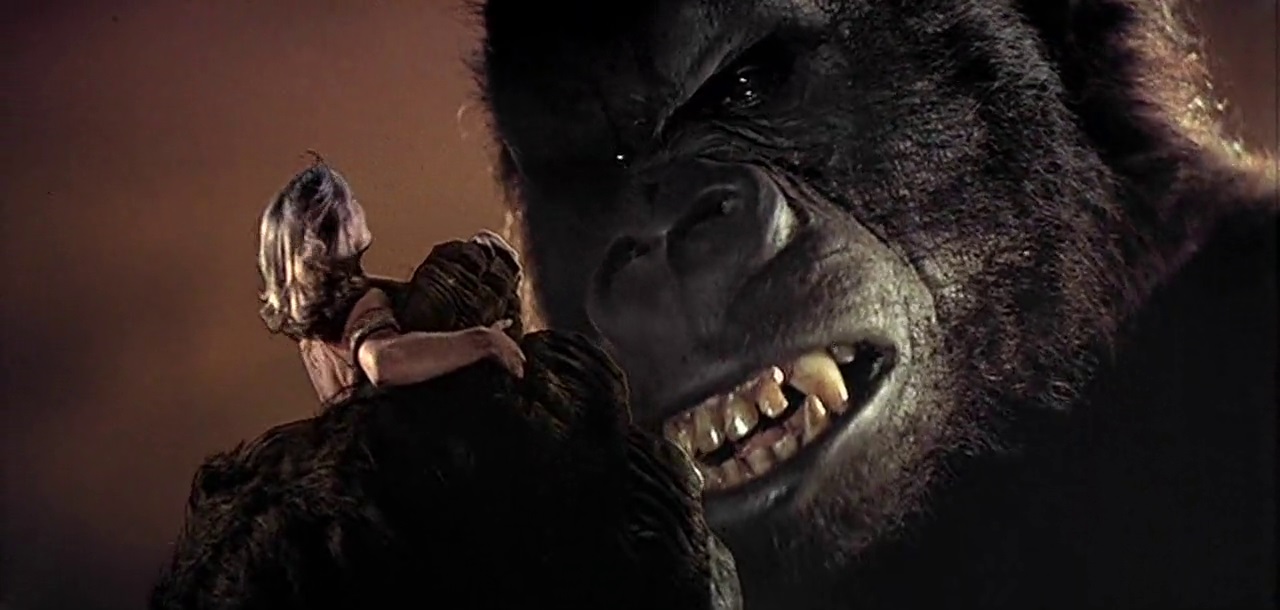
Two words sum up the reasons for watching this remake of “King Kong”: Jessica Lange. In one of the great film debuts in history, Jessica Lange floats onto the scene in an inflatable raft, resplendent: golden-blonde hair, a helpless look in her eyes, murmuring breathlessly in an accent that is two parts southern belle, eight parts sun-bleached California Girl.
Taken aboard a ship headed for Skull Island, she instantly falls into the arms of environmentalist-climatologist Jeff Bridges, who also seems to be an amateur photographer. Lucky for him—and for us—he’ll get all the pictures he wants of the lovely Lange.
Yeah, Lange is scorchingly sexy in this remake of “King Kong,” released in 1976. We can tell that Lange was born for the screen, for she is able to deliver hokey lines about astrology—“I’m a Libra. What’s your sign? I bet you’re a Gemini. I can always tell”—like a seasoned pro. Kudos to her for giving the object of Kong’s affections a density the script doesn’t seem to want her to have.
In a now famous scene, the big ape’s affection for Lange’s character come close to being pornographic as he gives her a shower, via waterfall. Again, the scene is eye-poppingly sexy (how the movie finagled its way into a PG-rating, I’ll never know), but Lange is able to give her character just the touch of bemusement needed, and we can almost believe she is beginning to harbor some amount of affection for the hairy beast.
Lange is great in a movie that merely needs her to be beautiful, displaying a subdued feistiness that would bode well for her in the years ahead, years that would eventually garner for her two Oscar wins and universal acclaim as one of our greatest living actresses. We didn’t know how great Lange would be at this point in history, and it is a pleasure to watch her career unfold in a film that is, otherwise, slow and dull.
7. Jason X
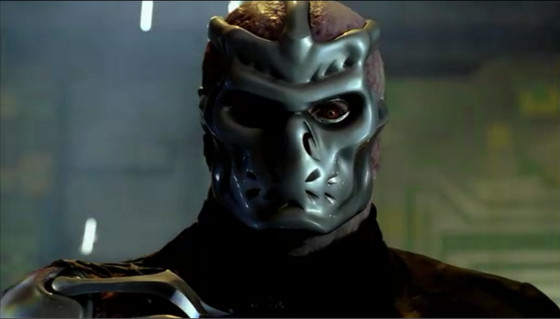
“Jason X,” the tenth film in the wildly successful series of “Friday the 13th” films, is easily the best. Loved by horror film buffs (such as myself), reviled by film critics (such as myself), the “Friday the 13th” series has been trucking along for over 35 years, sidestepping derision within the film industry itself, the Christian Coalition, worrisome mothers, and haters in general.
Its reputation for shoddiness is, at the very least, somewhat deserved, as nearly every film in the series devolves into witnessing Jason Voorheis, the maniac with a machete, come up with inventive ways of killing teenagers and young adults; even I have to admit to a special fondness for the death-by-spear-gun in “ Friday the 13th,Part 3.”
With “Jason X,” we find Sean Cunningham, the originator of the series, back in the producer’s chair, finding ways to update and tweak his creation. Cunningham honors his own creation by riffing on the idea that if Jason is actually an unkillable killing machine, why not make his immortality or invulnerability part of the plot?
In the early 21st century, Jason is cryogenically frozen in an attempt at putting his potential danger in suspension; things get screwed up, and we flash-forward to the 25th century, where limb regeneration and bringing people back from the brink of death is the order of the day.
Some things haven’t changed, though. Aboard a fully functioning medical ship, first-year medical students are still shiftless and horny, attitudes that will be put to the test as they defrost Jason’s cadaver.
Suffice it to say, Jason inadvertently defrosts himself, and the inventive “kills” begin to pile up. Part of the fun of “Jason X,” then, is that it plays on the idea that the fucker just won’t die, a problem that becomes less cinematic as the years go by, acquiring, instead, the sheen of theodicy, as we begin to wonder about the persistence of evil in the universe.
In the 25th century, however, there are androids to help solve such thorny theological issues. Played well by Lisa Ryder, the android Kay-Em 14 acts as the film’s Serial Killer Disposal Unit, armed to the teeth with guns and a decided imperviousness to pain.
Along the way, “Jason X” provides us with solid performances from the entire cast, as they spout out chirpy dialogue and zingy one-liners. And when Jason gets an unlooked for “upgrade” near the end of the film, everybody in the film is gonna party like its 1982.
8. The Texas Chainsaw Massacre 2
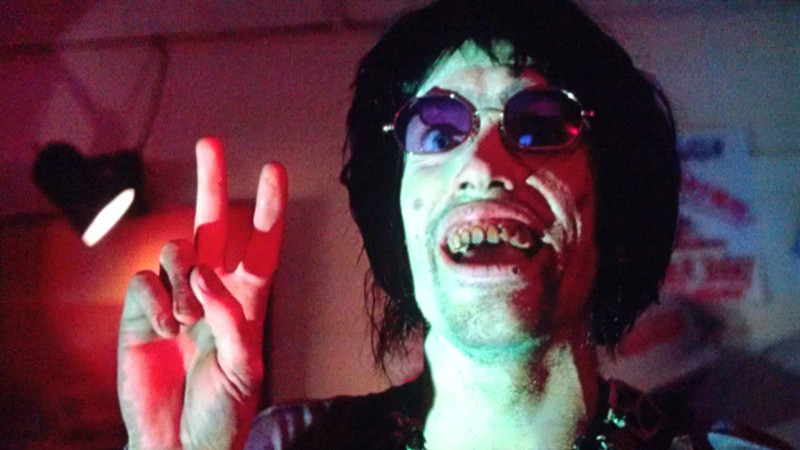
Dennis Hopper was having a great film year in 1986. In one film season, he would give his two greatest performances, as an alcoholic assistant basketball coach in “Hoosiers,” and the diabolical, terrifying psychopath, Frank Booth, in “Blue Velvet.”
The 1986 film year would culminate for Hopper with an Oscar nomination for “Hoosiers,” as well as notice from the critic’s circles for his work in “Blue Velvet.” I wonder why no one noticed that he was also in Tobe Hooper’s sequel to “The Texas Chainsaw Massacre?” Just an oversite, I imagine.
It wasn’t noticed, perhaps, because the movie really isn’t about Hopper, or his ex-Texas Ranger character, Lefty Enrgiht. Yeah, he’s there in order to take revenge on the family of cannibals who killed his sister’s kids, but his journey is peripheral compared to what happens to the film’s main female character, Stretch, played to the frantic hilt by Caroline Williams.
Hooper’s original film (probably the greatest horror film ever made) was all about waving a middle finger at bourgeois convention through the medium of a family of killers who were serious about their meat. There is more of the same in “Massacre 2,” delivered to us on a larger, bloodier scale. Sacred cows of Texas state history are either shot at or blown to pieces—the Alamo, the battle of San Jacinto—as his family of cannibals serve both as defenders of Texas honor, as well as emblems of rebellion and chaos.
One also has to wonder about the sort of feminist Hooper may or may not claim to be. The oft-quoted line, “fuck me gently with a chainsaw,” gets a nearly literal interpretation in Hooper’s film, as chainsaw’s themselves become symbols of male genitalia and aggression. Essentially, the film depicts Stretch’s journey towards her own chainsaw (read into that whatever you want), acquired after much screaming and duress.
Nowhere near as visceral or self-contained as the original film, “Texas Chainsaw Massacre 2” still packs a punch, 30 years after its release. Visually dense and consistent in its execution, the film is further proof, if anyone ever needed it, of Hooper’s conviction that Art is Chaos and Chaos is Art.
9. The Hitcher
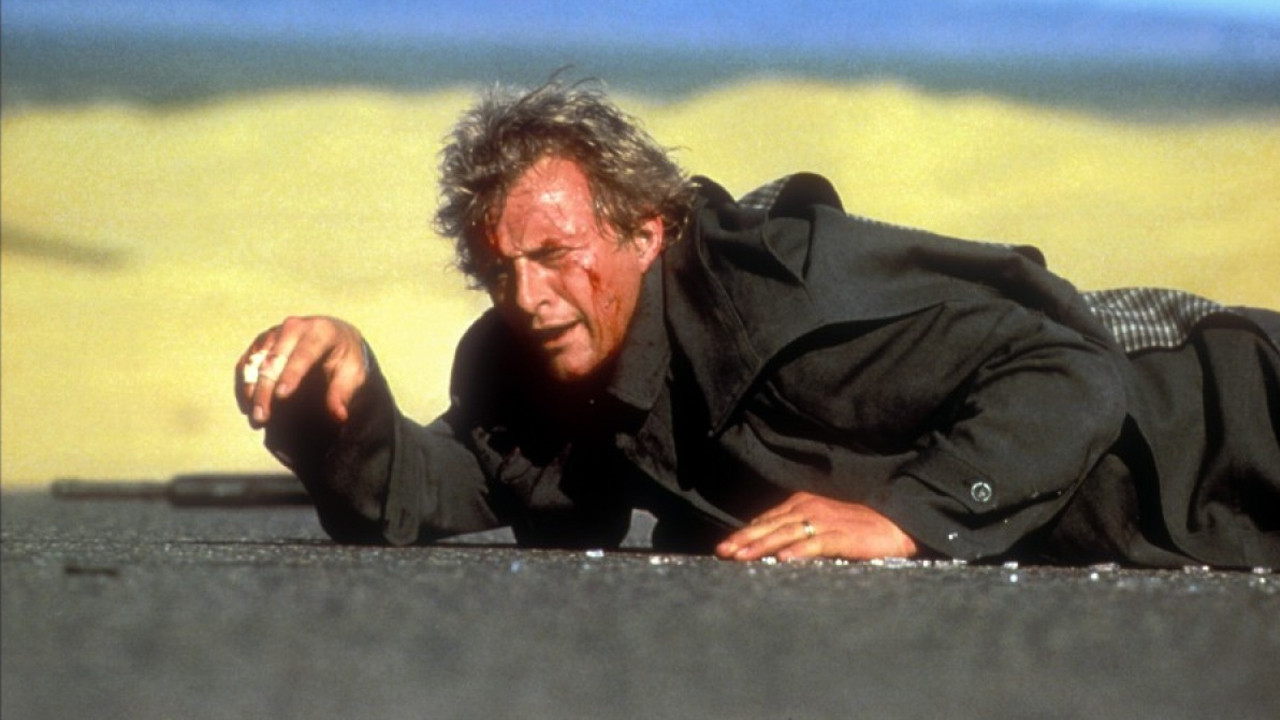
Robert Harmon’s film, “The Hitcher,” knows at least one thing especially well: Evil, in the horror movie universe, is all the more evil if it is irrational and unnamed. Although Rutger Hauer, the “hitcher” of the title, names himself “John Rider” in the film’s first scene, we know by the end of the film that he is, in fact, No One, an aimless, murderous nomad with no official identification of any sort, who seems to want to menace poor kid C. Thomas Howell for no apparent reason whatsoever.
We are given some idea of the hitcher’s reasoning through an imperative—“Stop me!”—and a vague statement—“I want to die,” in the film’s first scene, which doesn’t come close to explaining the hitcher’s menacing presence, leaving the viewer to roll with the cinematic punch.
Such evasiveness could have spelled doom for Harmon’s film; strangely enough, it does not. Instead, Hauer’s inexplicable, relentless, adversarial nature becomes the fulcrum of nearly every scene in the film: whether it’s the slight-of-hand, off-screen move of feeding C. Thomas Howell a side-order of finger-fries, or, the mysterious removal of bullets from Howell’s pistol, we key into the fact that Hauer’s hitcher can and will do anything in order to create a worthy adversary out of Howell’s Jim Halsey.
Whether Hauer’s character harbors some supreme death wish is debatable; but what is immediately clear, is the hitcher’s uncanny ability to drive others to near madness and inevitable confrontation. In this way, “The Hitcher” begins to approach the purest, coldest, recesses of Existentialist philosophy: in a Godless universe, where human beings are barely capable of being moral agents of themselves, what is to be done when our hand is forced by agencies beyond ourselves?
Harmon’s visual sense helps to inform such a reading, however bleak it may be: the lonely, wind-swept interstates of the southwest; cell doors that seem to open themselves onto blood-drenched police stations; dingy motel rooms echoing with white noise from the television set; these are the elements that give his film a brooding, desperate ambiance.
Through all of it, we bear witness to the desperation of poor sucker Jim Halsey, who can do nothing but be drawn deeper and deeper into the hitcher’s death dance.
It should be said that, for all its laudable qualities, “The Hitcher” is not a perfect film: a tedious chase sequence nearly derails it; C. Thomas Howell’s performance is broad and annoying; there is little character development. By the time we reach the inevitable conclusion, however, “The Hitcher” has righted itself just enough to qualify as a little, if imperfect, gem of a film. Indeed, Robert Harmon’s existential nightmare can safely be put on a list of the Best Horror Films of Eighties.
10. Spies Like Us
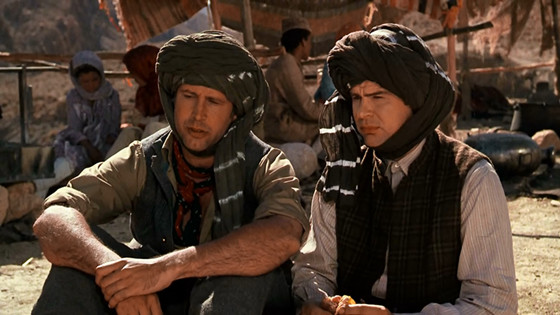
In “Spies Like Us,” Dan Aykroyd reduces nuclear annihilation to the level of comedy when, referencing a nuclear missile, he says, “Do you know what one of those things can do?! Strip the paint off your house and give your family a permanent orange afro!” Sounds about right.
The defense build-up of the early-to-mid 80’ between the United States and the Soviet Union was so absurd and profoundly menacing, it was simply asking to have holes poked in it. And so we have John Landis’s consistently funny film from 1985, casting Chevy Chase and Dan Aykoryd as unwitting agents in the global arms race.
I don’t know which scene I like best: Is it Chase and Aykoryd’s bumbled attempt at cheating on the Foreign Service Exam? Is it Aykoryd fumbling his way around an operating theater as a phony surgeon? Is it Chase’s lecherous attempts at bedding Donna Dixon? I can’t help but laugh at all these scenes and marvel at Chase and Aykroyd’s effortless comedic timing, their ability to work off of each other being superb.
Yet, somehow, I’m always left wanting more after viewing the film. Maybe it has something to do with the fact that, in Landis’s best films—-“Animal House,” “The Blues Brothers,” “An American Werewolf in London”—Landis and his actors are able to give us something to care about, other than the success of the next comedic bit.
We care about Jake and Ellwood Blues; we want to see them give their concert and stick it to the Chicago PD at the same time. We care about the brothers of Delta House; we want them to tear down the walls of Faber College and get away scot free. Can we say the same thing about Emmett Fitz-Hume and Austin Millbarge in “Spies Like Us”? Yeah, they’re a couple of funny guys and we laugh at what they do, but should we care?
Part of the problem lies in the very real possibility that, by 1985, Chase and Aykroyd had already reached their respective comedic apexes, and it was only downhill from there. If “Spies Like Us” is really only a succession of good skits or moments, I’ll still settle for it every time over something like “Funny Farm” or “Nothing but Trouble,” both films which I like to pretend don’t even exist.
Well, there you have it, then, yet another list of cinematic anomalies—those films that make you shake your head, or, cry tears of shameful joy. Whether it’s Action-Figure Arnold proudly and most violently disposing of his daughter’s captors in “Commando,” or the failed attempt at mythmaking of Ridley Scott’s “Legend,” or if you somehow wish to travel to the cold-blooded universe of “The Hitcher,” you can safely say of all these films: “Yeah, I kinda like that movie.
In fact, I own it. Who the fuck are you to say I shouldn’t like it? It’s not like they hand out credentials to show that you’re a film critic, right? Oh, wait…maybe they do.” Never mind.